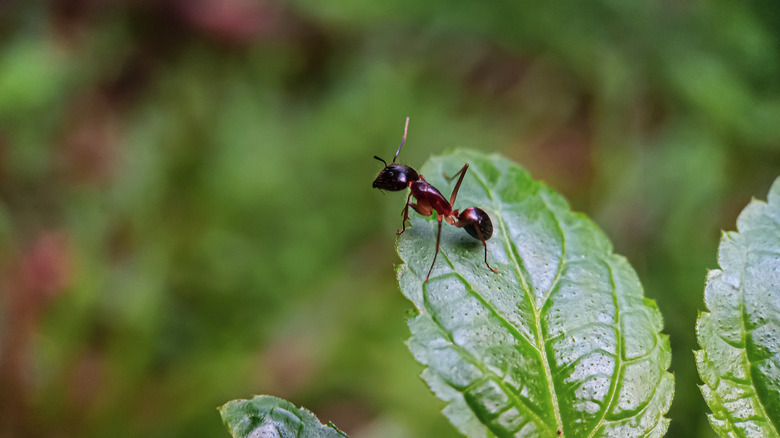Pyramid Vs Fire Ants: What's The Difference? (& Which Is More Harmful)
When you discover a colony of ants on your property, it's unlikely that you'll be inclined to stop and investigate what species you've got crawling around your yard. Homeowners simply go searching for the best ways to get rid of ants, and let the concoction rain on the insects. However, you might want to be a bit less trigger-happy when you find ants in your yard, especially if you have a garden. Although you've probably heard horror stories of ants ravaging through the roots of crops, you should know that not all ants are the same. Two of the more common species you might find in your home or garden are fire ants and pyramid ants, and while they're close enough in appearance that they might confuse the average homeowner, they could not be more different.
Fire ants are a menace. These tiny insects may appear small, but they can wreak serious damage. They are known to be very aggressive, rushing out of their mounds in great numbers when the area around them is disturbed to bite their unlucky target, which could be a child or a pet. These bites are rarely lethal, but the ant tries to rectify that with its stinger, which injects venom into its target. This causes pain and reactions that can be life-threatening in some allergic individuals. Then you have pyramid ants that are considered beneficial because they prey on fire ants and other insects, leaving your plants alone. They'd also retreat into their nests when they encounter a disturbance in the area, instead of attacking. These ants are a lot less aggressive than fire ants.
Telling fire ants and pyramid ants apart
There are ways to tell if you have a pyramid or fire ant infestation just by looking at the mound in your yard. Pyramid ant mounds are typically cone-shaped with a distinct entrance in the middle, like a small volcano, while fire ants have nests that are flat and wide. Pyramid ants usually build their nests close to fire ant mounds, so their presence is a good indicator that you likely have a fire ant infestation in your yard.
Also note that pyramid ants have an orange-red color on their thorax and abdomen, while fire ants sport a deep-red or copper-brown thorax and a darker abdomen. Pyramid ants have a pyramid-shaped structure on the top of their thorax, which fire ants don't have. If you look closely, you should be able to tell them apart with these features. If you're getting that close, you might as well look for stingers. Fire ants have a stinger and a pair of large mandibles, which they don't hesitate to use, while pyramid ants don't have those.
Fire ants are also a bit more organized when foraging, creating trails as they go along their search, unlike pyramid ants, which tend to forage individually or in small groups. This might also be a result of their number, as pyramid ant colonies typically have only a few thousand individuals, while fire ant colonies can house up to two hundred thousand ants. Now, you'll be more informed when next you decide to squish an ant, which is a big mistake by the way.

